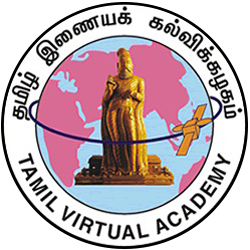Primary tabs
-
Lesson 2
d06132 Mangala Isai
It offers a definition of mangala isai, traces its
origin and growth, speaks of its close association with
temple worship and describes in detail the instruments
used to render it. The lesson also talks about the
renowned exponents of mangala isai.Mangala isai is a form of benedictory or
invocatory music that occupies a very important place
in Tamil culture. The word ‘mangalm’ means ‘auspicious’.
This ancient musical form flourished in the temples
where it was performed during the hourly poojas. It is
also rendered during festivals and other important
occasions such as weddings and house warming
ceremonies to invoke the blessings of the gods.Mangala isai also known as ‘mela isai’ is
performed by a troupe of musicians called the
melakkarar’. The mangala isai troupe that is a part of
the temple is called ‘Koil Melam’. Some times managala
isai troupes are hired from outside to perform during
festivities. Such troupes are called ‘Erppadu Melam’.The
nagaswaram and the tavil are the 2 important
instruments used in mangala isai. The nagaswaram is a
wind instrument and is also called ‘peru vangiyam’ and
‘naayanam’. The nagaswaram is made of seasoned
wood from the aacha tree and is of different types
called paari, thimiri, idaippaari and madima sruthi. The
upper part of the nagaswaram is called ulavu in which
12 holes are bored. The lower part is called anasu.
Training in nagaswaram is in the gurukula tradition.
Mastery over nagaswaram requires at least 10 years
of intense training and practice.The tavil which is played as an accompaniment
to nagaswaram is a tholkkaruvi. It is made of hide
stretched across 2 sides of a cylindrical drum carved
out of wood from the jackfruit, neem or puvarasu tree.
Originally called the manamuzhavu, the tavil is of 2
types: manthara sruthi tavil and thimiri tavil.Nagaswaram and Tavil exponents are held in high
esteem in Tamilnadu. Among the nagaswaram artists,
Thiruvaaduthurai Rajaratnam Pillai occupies a special
place. An expert in playing the thodi ragam, his recital
was broadcast over the radio on the day of India’s
Independence on 15. 08. 1947.



